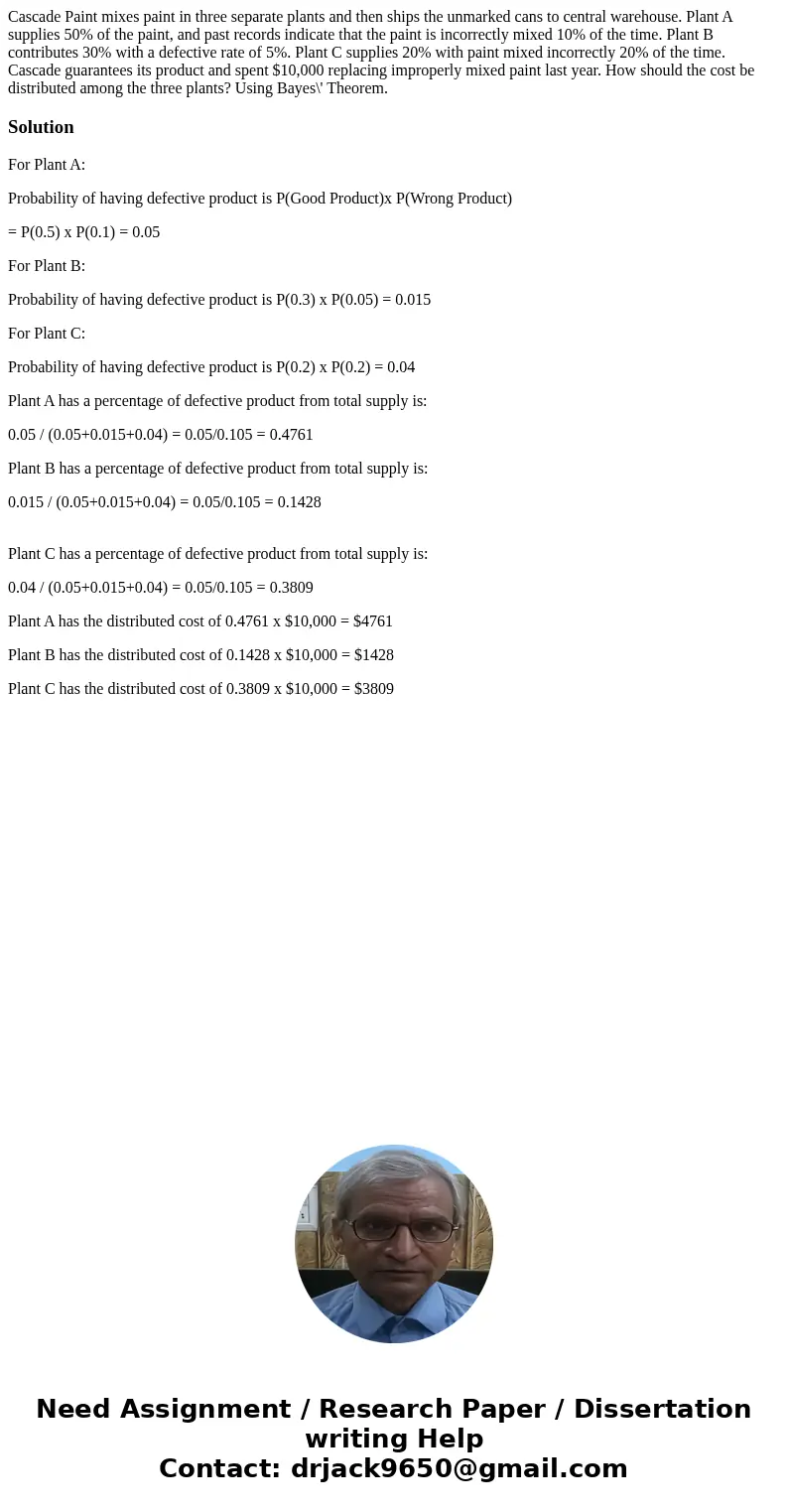Cascade Paint mixes paint in three separate plants and then
Cascade Paint mixes paint in three separate plants and then ships the unmarked cans to central warehouse. Plant A supplies 50% of the paint, and past records indicate that the paint is incorrectly mixed 10% of the time. Plant B contributes 30% with a defective rate of 5%. Plant C supplies 20% with paint mixed incorrectly 20% of the time. Cascade guarantees its product and spent $10,000 replacing improperly mixed paint last year. How should the cost be distributed among the three plants? Using Bayes\' Theorem.
Solution
For Plant A:
Probability of having defective product is P(Good Product)x P(Wrong Product)
= P(0.5) x P(0.1) = 0.05
For Plant B:
Probability of having defective product is P(0.3) x P(0.05) = 0.015
For Plant C:
Probability of having defective product is P(0.2) x P(0.2) = 0.04
Plant A has a percentage of defective product from total supply is:
0.05 / (0.05+0.015+0.04) = 0.05/0.105 = 0.4761
Plant B has a percentage of defective product from total supply is:
0.015 / (0.05+0.015+0.04) = 0.05/0.105 = 0.1428
Plant C has a percentage of defective product from total supply is:
0.04 / (0.05+0.015+0.04) = 0.05/0.105 = 0.3809
Plant A has the distributed cost of 0.4761 x $10,000 = $4761
Plant B has the distributed cost of 0.1428 x $10,000 = $1428
Plant C has the distributed cost of 0.3809 x $10,000 = $3809

 Homework Sourse
Homework Sourse